Keeping a bathroom functional and fun for kids can be a challenge—especially when balancing safety, organization, and playful design. The right setup can make daily routines smoother while also encouraging independence and creativity. From clever storage hacks to cheerful color schemes, this guide focuses on practical ideas that work for real families. Whether you’re designing for toddlers or school-age kids, each tip is chosen to make the space easy to use, easy to clean, and enjoyable for little ones. Scroll on for solutions that are both parent-approved and kid-friendly, ensuring your bathroom grows with your child’s changing needs.
Interactive Wall Murals
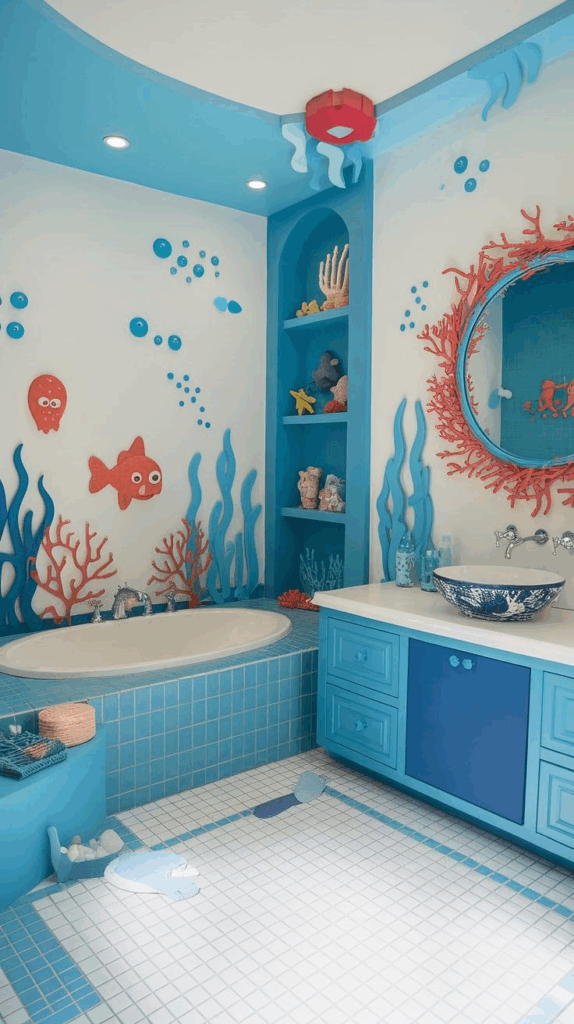
Turning plain walls into playful canvases makes a bathroom feel like a storybook setting. Interactive wall murals that incorporate erasable whiteboard sections, chalkboard paint, or peel-and-stick dry erase decals invite kids to express their creativity while brushing their teeth or waiting for bath time. These murals can be themed around animals, outer space, under-the-sea adventures, or fairy tale castles—each sparking imagination and encouraging personal engagement with the space. Some families opt for magnetic paint beneath the mural to allow alphabet magnets or storytelling pieces to stick to the surface.
This visual stimulation fosters developmental learning, especially in early childhood, while making routine hygiene tasks feel more enjoyable. Washable and water-resistant materials ensure these murals hold up well in humid environments, making them both functional and fun. Parents appreciate the opportunity for rotating themes and educational exposure, while children love having a dedicated space that feels entirely their own. For those who want flexibility, removable vinyl murals or decals offer easy updates as kids grow. This approach supports motor skill development, literacy encouragement, and makes the bathroom a cheerful extension of playtime. Prioritizing engagement transforms the room from utilitarian to memorable—an impactful choice for family-friendly bathroom design.
Adjustable Fixtures
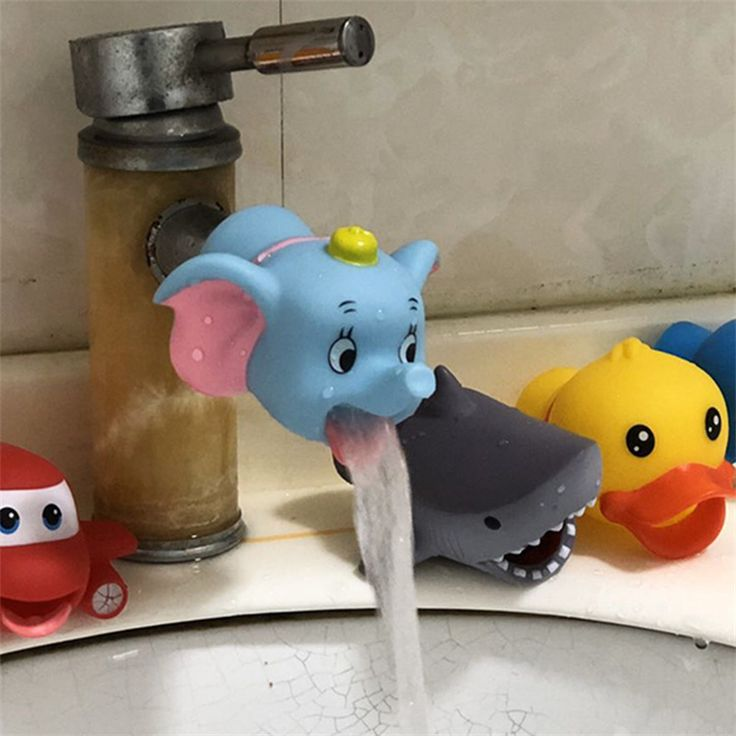
Growing children come with ever-changing needs, and adjustable fixtures provide the flexibility to adapt alongside them. Height-modifiable faucets, showerheads, and handheld sprayers allow for independent use without compromising comfort or safety. These types of fixtures are especially valuable for children learning self-care skills, offering them independence while staying within ergonomic reach.
For sinks, pull-down or swing-arm faucets accommodate shorter reach while also making handwashing more interactive and engaging. Some families opt for adjustable-height vanities or faucet extenders, which eliminate the need for unsightly step stools and reduce fall risk. In the shower, slider bars with removable handheld wands ensure rinsing becomes an enjoyable activity rather than a chore.
Besides functionality, many of these fixtures are available in vibrant colors or fun shapes to blend with kid-themed aesthetics. Models with safety stops help regulate water pressure and prevent scalding, providing peace of mind for parents. For a shared space, adjustable hardware benefits children and adults alike, avoiding constant modifications. When thoughtfully chosen, these fixtures grow with the child and eliminate the need for multiple redesigns over time. Adapting the bathroom to a child’s height and coordination level significantly improves usability, encouraging confidence and independence from a young age.
Themed Decor Elements
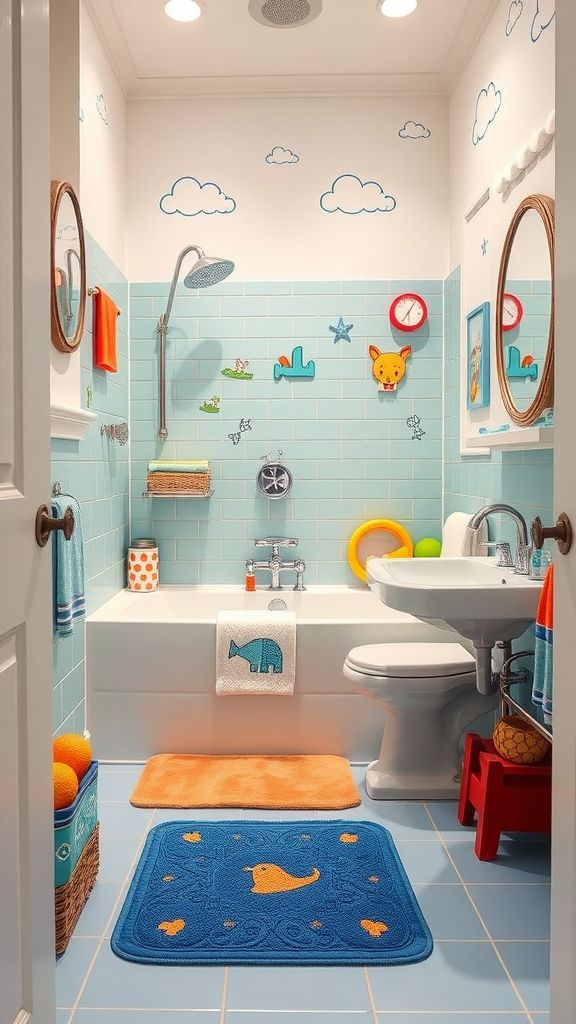
Bath time becomes far more appealing when the room is infused with an imaginative theme. Whether it’s a jungle safari, deep-sea expedition, outer space, or a princess castle, themed décor helps kids connect emotionally to the space. Towels, rugs, soap dispensers, wall decals, and toothbrush holders can all support the chosen aesthetic, creating a cohesive experience that sparks excitement every time they enter.
To avoid going overboard, choose a main theme and stick with a consistent color palette. Functional items like toothbrush cups and towel hooks become playful accessories when designed as animals, stars, or treasure chests. Wall art that reflects the theme—like an undersea mural or a space exploration poster—adds narrative value without taking up counter space.
Many parents find that a well-curated theme helps children feel a stronger sense of ownership and comfort in their bathroom routine. Removable decals and themed accessories allow easy updates as tastes evolve. Matching storage bins and labeled baskets add structure while staying within the design vision. From playful pirate adventures to magical unicorn lands, a themed bathroom fuels storytelling and sensory development. With minimal investment, the right themed elements can turn a utilitarian room into a memorable destination tailored for childhood wonder
Color-Coded Storage
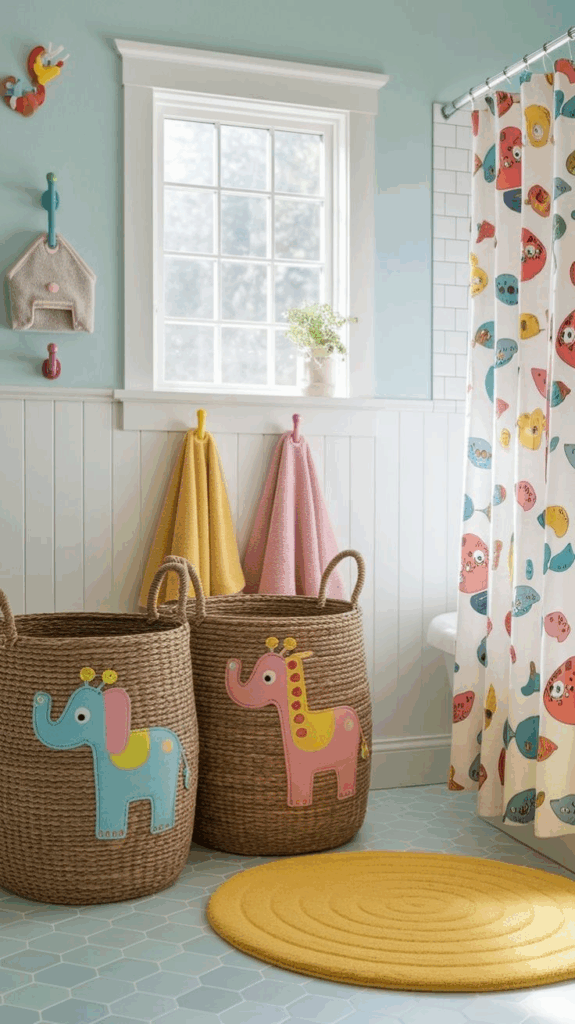
Keeping shared bathrooms tidy becomes easier when every child has their own designated space—and color-coded storage is an ideal solution. Assigning a distinct color to each child for items like towels, toothbrush holders, storage baskets, and toiletry bins creates clarity, reduces confusion, and builds a sense of responsibility.
This visual organization method helps even the youngest users identify their belongings without needing to read labels. For larger families, it simplifies morning and bedtime routines while minimizing arguments over misplaced items. Hooks, drawer dividers, and under-sink baskets can all follow this system, supporting a clutter-free environment and smoother daily flow.
Color-coded zones also encourage habit-building by creating predictable spaces for hygiene tools. When combined with soft-close drawers and accessible shelving, kids are more likely to put things back in place without prompting. Some families even use matching dots or icons to support early learners who aren’t yet color-literate.
Parents appreciate the reduction in mess, and children feel empowered having a clearly defined area of their own. This method also aids caregivers and guests in quickly identifying what belongs to whom. By using color as a functional organizing principle, bathrooms stay tidy, efficient, and tailored to every child’s needs—no matter their age or abilities.
Step-Friendly Designs

Bathrooms designed with small users in mind often include features that make reach and balance easier. Step-friendly designs prioritize child-safe access to sinks, toilets, and counters without risking slips or falls. Built-in or pull-out steps beneath vanities are among the most effective solutions, eliminating the need for loose stools that clutter the floor and pose tripping hazards.
These integrated steps can be finished in durable, non-slip surfaces that match cabinetry, blending seamlessly into the room while ensuring safety. Some are even height-adjustable or collapsible, allowing for multi-age usability. In cases where built-ins aren’t feasible, sturdy platform steps with wide bases and rubber grips offer security and stability.
Taller toilets or counters can be modified with booster platforms or ergonomic add-ons, ensuring every child can participate independently in hygiene routines. Rounded edges, anti-tip designs, and soft-close drawers further reduce accident risks.
This approach supports both physical independence and developmental milestones by giving kids the confidence to perform tasks without constant assistance. Parents benefit from fewer daily interruptions, and kids gain autonomy in a space built just for them. Prioritizing safe, accessible stepping structures is an essential aspect of any well-considered children’s bathroom layout.
Educational Tiles
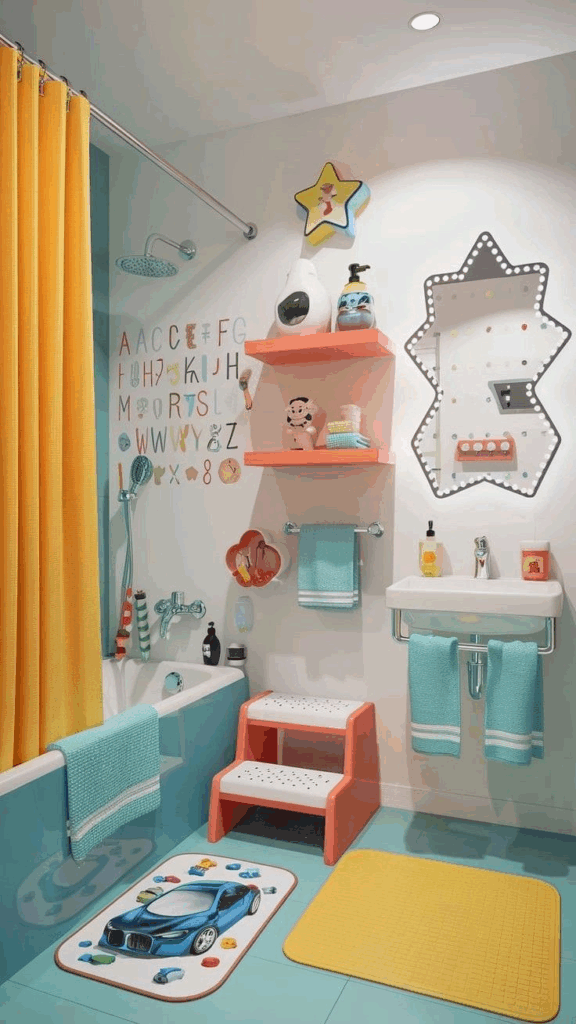
Surrounding children with subtle learning opportunities makes daily routines more enriching. Educational tiles turn the bathroom into a space where curiosity thrives, even during the simplest activities. Alphabet letters, numbers, animal shapes, or basic science symbols embedded into wall or floor tiles give young minds something stimulating to engage with while brushing, bathing, or washing up.
These designs can follow a variety of themes—underwater life, planets, jungle animals, or even historical figures—depending on the child’s age and interests. Some tile collections include interactive features such as matching games, phonics cues, or counting prompts baked directly into the visuals.
Using non-slip, waterproof materials ensures longevity, and vibrant colors add visual delight. For bathrooms shared by multiple kids, educational zones can be personalized by theme or level of difficulty. Including braille tiles or multilingual letters offers inclusivity while reinforcing diversity and accessibility.
Parents often find that such embedded learning prompts natural discussions or reinforce school lessons in a relaxed, playful setting. For younger children especially, consistent exposure builds familiarity with shapes and concepts without formal instruction. Educational tiles transform the bathroom into a dynamic micro-learning hub—adding intellectual value while still focusing on hygiene and play.
Eco-Friendly Materials
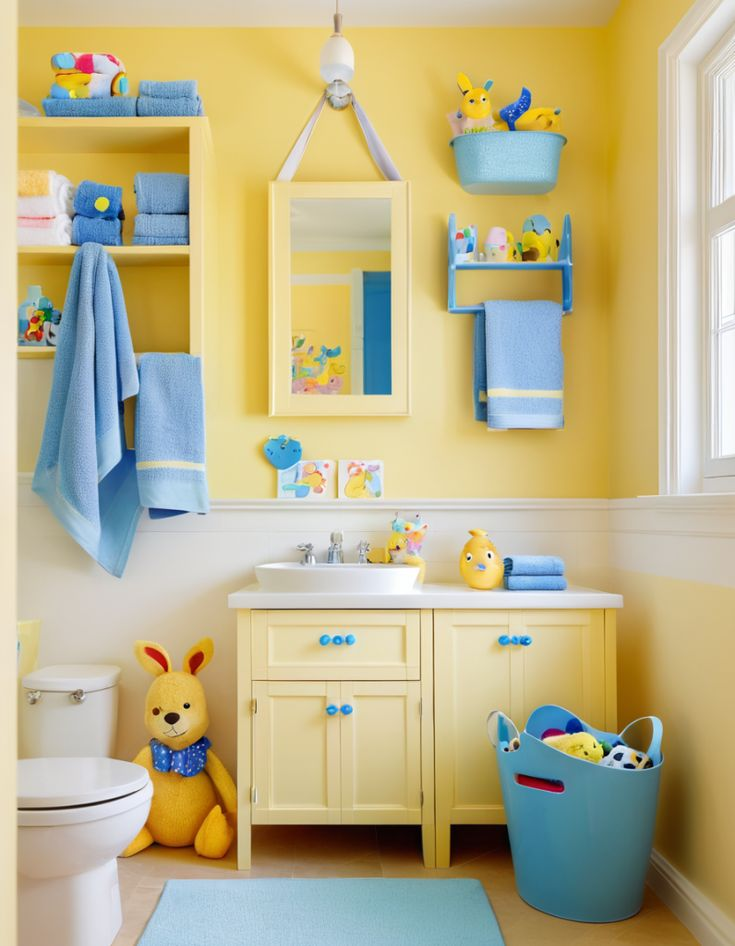
Sustainable living can begin as early as childhood, and the bathroom is a smart place to start. Eco-friendly materials like bamboo, recycled plastic, and low-VOC paints contribute to a healthier environment both indoors and out. Cabinets made from responsibly sourced wood or composite alternatives reduce deforestation impact while maintaining durability and style.
Opting for organic cotton towels, biodegradable toothbrushes, and soap bars without plastic packaging introduces kids to green habits in practical, daily ways. Flooring choices like cork or recycled rubber provide safe, soft, and water-resistant options perfect for little feet. Many modern eco products also offer bold colors and kid-friendly aesthetics, making green choices more appealing.
Installing dual-flush toilets, low-flow faucets, and aerated showerheads conserves water without compromising performance. Teaching children the “why” behind these features builds long-term awareness around sustainability. Labels like GREENGUARD or FSC can help guide safer product selections that align with environmental values.
Families embracing eco-conscious decisions not only reduce their household’s carbon footprint but also model responsible behavior. By surrounding kids with thoughtful, earth-friendly materials from the start, bathroom design becomes a meaningful first step toward lifelong environmental mindfulness.
Motion Sensor Lighting
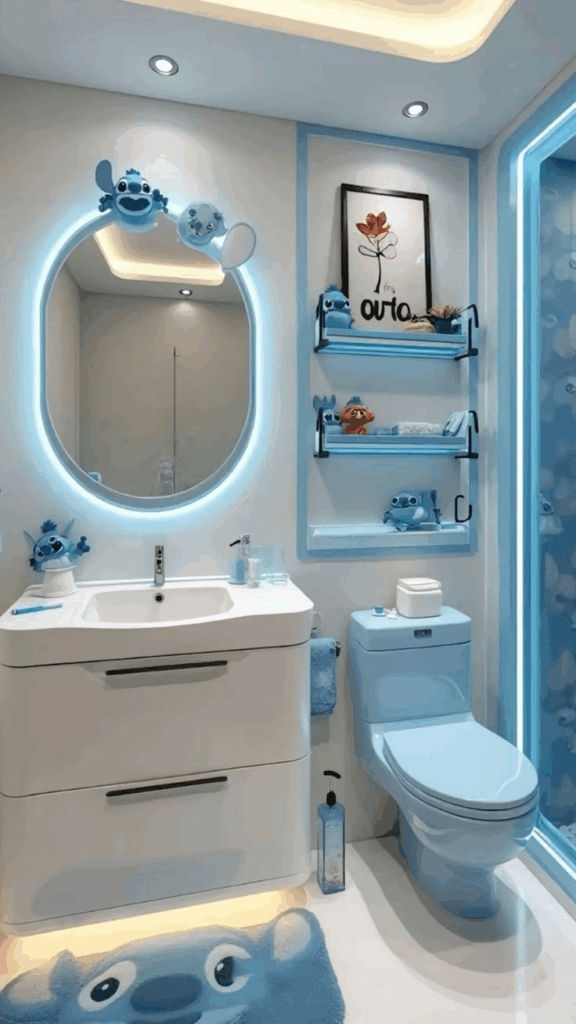
Helping kids navigate the bathroom safely, especially at night, becomes easier with motion sensor lighting. Lights that activate when someone enters the room prevent stubbed toes, encourage independence, and reduce fear during dark hours. Motion-activated nightlights near the baseboards or integrated into vanity undersides offer gentle illumination without harsh glare.
Some designs include color-changing LEDs that can be set to dim warm tones in the evening and brighter whites during daytime routines. For younger users, friendly character-shaped lights or soft-glow ceiling options add a comforting touch. Sensors can be programmed for automatic shut-off to save energy and minimize electric bills.
Wall-mounted lights near the mirror or toilet also help during potty training phases or when teaching hygiene routines, offering immediate visibility without the need to touch switches. Many battery-powered options allow for renter-friendly installation, while smart models can connect with home assistants for added customization.
Beyond convenience, motion sensor lighting supports safety and accessibility—especially in shared or multi-age households. It also encourages routine development by reinforcing time cues without requiring adult intervention. Investing in these user-friendly lighting upgrades enhances the functionality and comfort of a kid’s bathroom while promoting energy-conscious habits early on.
Fun Shower Curtains
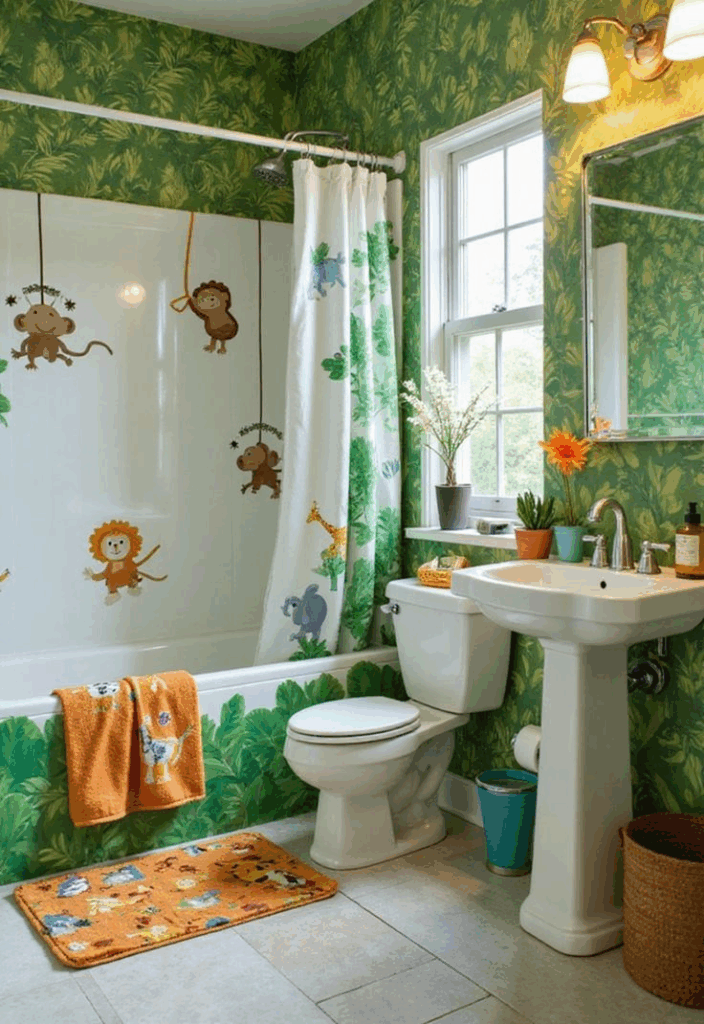
Bathing becomes an adventure when the shower curtain sparks imagination. Whether it’s covered in dinosaurs, outer space scenes, jungle animals, or playful undersea graphics, a themed curtain instantly transforms the bathroom into a storybook environment. Unlike permanent décor, shower curtains can be swapped easily as interests change, offering a cost-effective way to keep the space feeling fresh and exciting.
Look for durable, waterproof materials that are machine washable—ideal for busy families who need low-maintenance options. Some versions come with interactive features like 3D textures, transparent windows for light control, or pockets that hold bath toys.
For added flair, coordinate curtain colors with matching bath mats, towels, and toothbrush holders to create a cohesive theme. Educational prints such as letters, maps, or time-telling graphics can combine fun with learning. Using snap-on rings or easy-glide hooks makes it simple for children to help open or close the curtain on their own.
Parents appreciate that themed curtains can double as playful décor and functional splash guards. They’re an ideal way to introduce personality into a small space without committing to long-term changes. A thoughtfully chosen curtain adds character, encourages bath-time enthusiasm, and allows expression of a child’s unique preferences.
Magnetic Wall Panels
Creating interactive zones within a bathroom boosts both learning and engagement, and magnetic wall panels offer a versatile platform for play and organization. These panels can turn a section of wall near the sink, bathtub, or toilet into a hands-on surface where children arrange letters, numbers, or themed magnets.
Covered in waterproof materials or encased behind acrylic, magnetic boards are easy to clean and safe for high-moisture areas. They’re particularly helpful in engaging toddlers during brushing routines, allowing them to stick up animals, alphabets, or even reward stars for daily tasks completed.
Some families use the panel for visual schedules, helping younger children track their hygiene routines. Magnetic hooks also offer space-saving options for hanging washcloths, combs, or labeled containers. For larger bathrooms, an entire corner can be transformed into an educational play zone, making bath time less of a struggle and more of an event.
This setup fosters tactile learning and supports fine motor development, especially in early years. Plus, it encourages creativity without relying on screens. With endless configurations, magnetic panels remain one of the most flexible and interactive additions to a child-centered bathroom—perfect for families looking to combine function, learning, and fun in a limited footprint.
Personalized Hooks and Holders
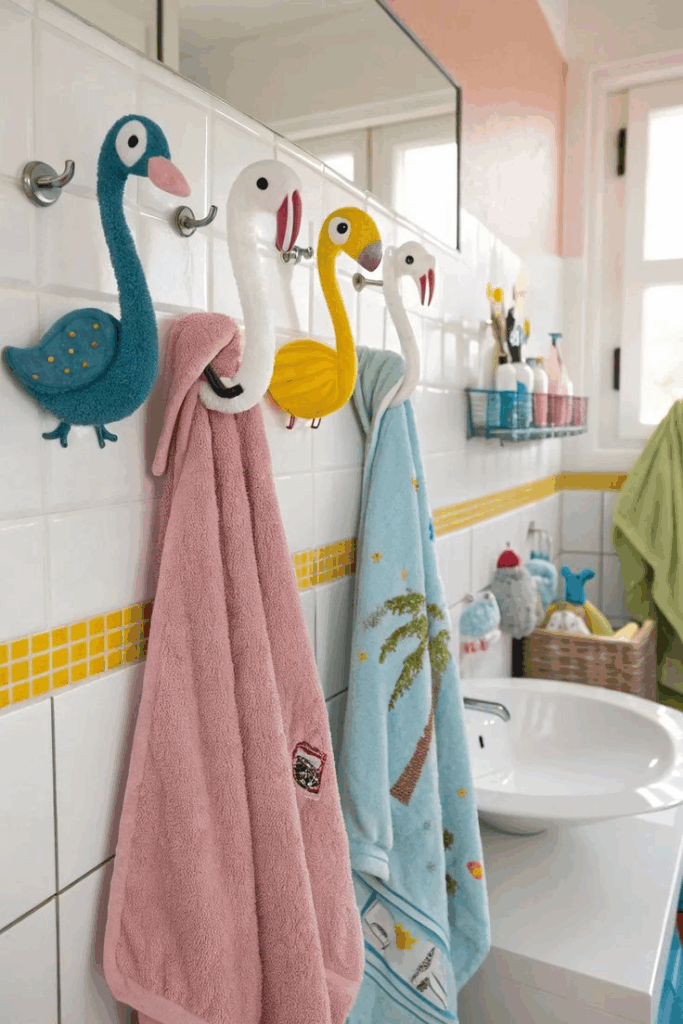
Giving children ownership of their space encourages tidiness and independence, and personalized hooks and holders help accomplish exactly that. Assigning each child a named or initialed hook for their towel, robe, or washcloth creates visual order while reinforcing individual responsibility. These hooks can come in playful shapes—like animals, stars, or vehicles—adding decorative flair to the wall while maintaining practicality.
Toothbrush holders, soap dishes, and hairbrush stands can be color-coded or custom-labeled, making morning and bedtime routines faster and more organized. Mounted at child-friendly heights, these fixtures ensure that kids don’t struggle to access their essentials, fostering independence even in younger age groups.
For shared bathrooms, this personalization strategy minimizes confusion and avoids cross-use of items, especially helpful in busy households. Some parents incorporate chalkboard labels or magnetic nameplates for added flexibility as kids grow or change preferences. Materials like BPA-free plastic or soft silicone offer safety and ease of cleaning.
This approach transforms basic necessities into functional design elements while helping build healthy habits. Children are far more likely to hang up towels or use the correct brush when the space reflects their identity. Personalized fixtures blend structure, hygiene, and fun—ideal for a child-centric bathroom layout.
Water Temperature Indicators
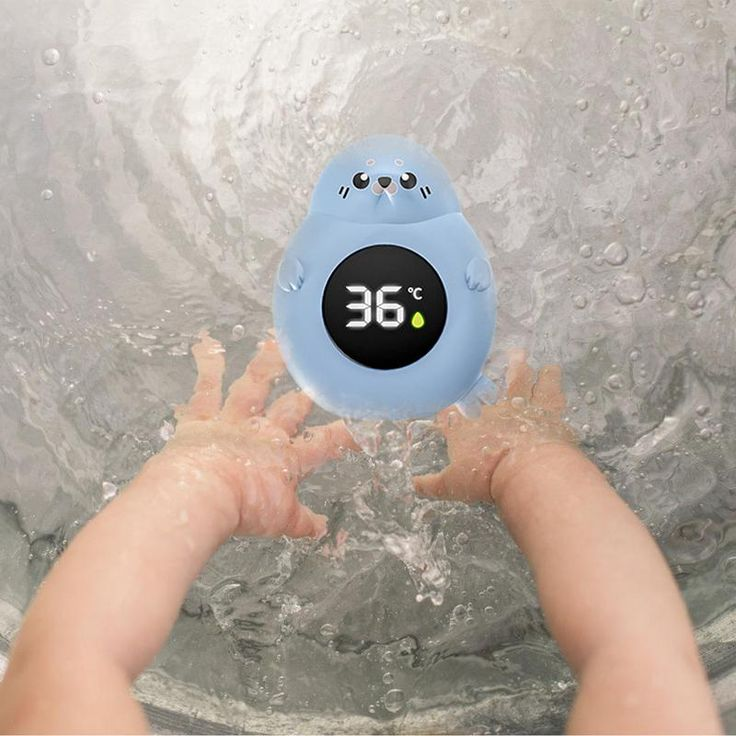
Safety is a top concern in any kid-focused space, and water temperature indicators help prevent accidental burns during baths or handwashing. These simple yet effective devices change color or display a digital readout to alert caregivers and children when the water is too hot or cold.
Options range from faucet-mounted sensors to built-in bath thermometers shaped like animals, providing both function and charm. Some even emit soft lights or audible cues, which can be especially helpful for toddlers or children with sensory sensitivities. Advanced models integrate directly into fixtures and offer real-time feedback during water flow.
For younger users learning to use taps independently, visual guidance builds awareness around safe temperature limits. Parents gain peace of mind knowing their children are less likely to get scalded. Battery-operated versions are portable and fit most standard tubs or sinks, making them ideal for families on the move.
Incorporating these indicators encourages self-regulation skills while ensuring safety protocols remain in place. When combined with anti-scald valves and thermostatic faucets, the bathroom becomes a safer and smarter environment for kids. Temperature monitors are a small but vital addition that adds both protection and confidence during daily hygiene routines.
Art Display Areas
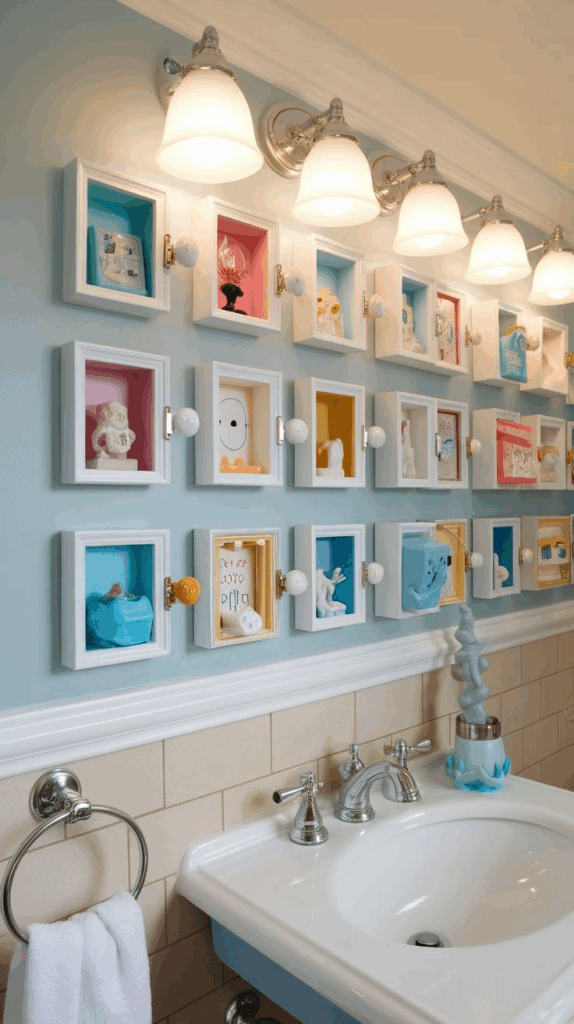
Celebrating creativity builds self-esteem, and an art display area in the bathroom gives children a daily reminder of their accomplishments. Whether it’s a framed drawing, laminated watercolor, or sticker-covered masterpiece, showcasing their art makes the space feel uniquely theirs.
Mounting water-resistant display frames or using magnetic strips ensures artwork stays protected in high-humidity environments. Removable clips or string-and-clothespin setups offer flexibility to rotate new pieces regularly without damaging walls. Some families dedicate a small bulletin board or tile area just above the sink or next to the towel rack for this purpose.
Displaying kid-made art adds personality and warmth while encouraging ongoing creative expression. The bathroom becomes more than a utility zone—it becomes an environment that celebrates growth and imagination. For siblings, each child can have their own mini gallery, reinforcing identity and minimizing comparison.
This feature is especially valuable in homes where bathroom time is a struggle. Seeing their own creations builds a sense of pride and may reduce resistance to daily routines. Involving kids in curating their space fosters ownership and positive associations with cleanliness. A well-designed display area becomes both décor and developmental tool—making everyday routines feel just a bit more special.
Non-Slip, Colorful Flooring
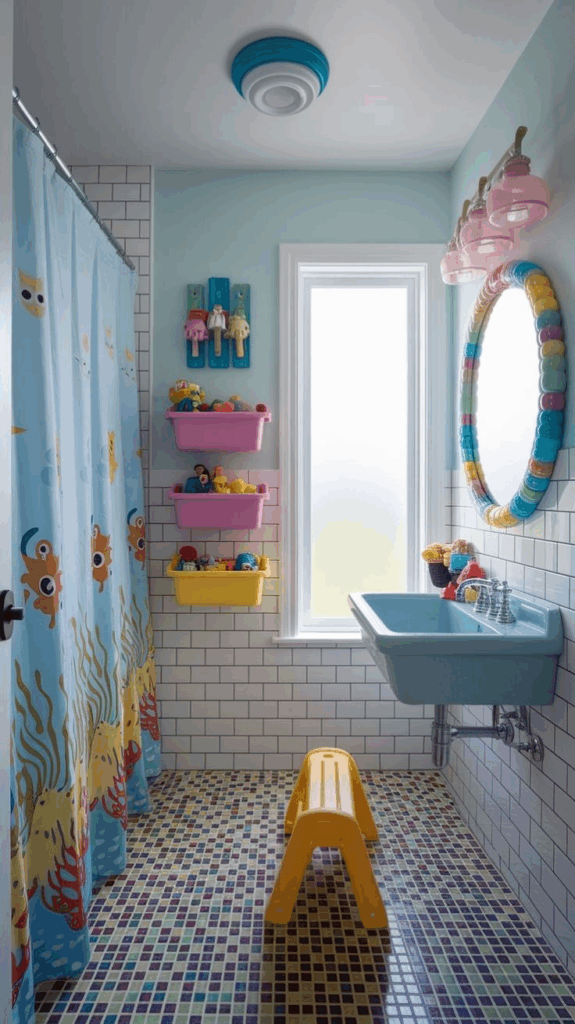
Safety and playfulness intersect beautifully with non-slip, colorful flooring designed specifically for kids. Bright rubber tiles, waterproof vinyl planks, or foam-based interlocking mats provide the traction needed to prevent slips while offering a vibrant, stimulating environment.
Patterns like puzzle pieces, animal shapes, or rainbow stripes add charm and excitement to the space, making it more than just another room in the house. These flooring options come in moisture-resistant, mildew-proof materials that are easy to wipe clean—perfect for the inevitable spills and splashes that come with bath time.
Parents often favor textured surfaces for added grip, especially around high-traffic areas near the tub or sink. Interchangeable floor tiles allow for easy replacement of worn sections, extending the floor’s lifespan. Some models also provide cushioning to soften falls, ideal for toddlers still building motor coordination.
Color can be used functionally too—assigning different colored zones for towel drop-off, toy storage, or bath-time prep areas helps guide children through routines. Flooring that delights and protects is a win for both kids and caregivers. It combines visual impact, safety, and long-term practicality—turning every step into a secure, colorful experience that supports both fun and function in the family bathroom.
Incorporate Technology
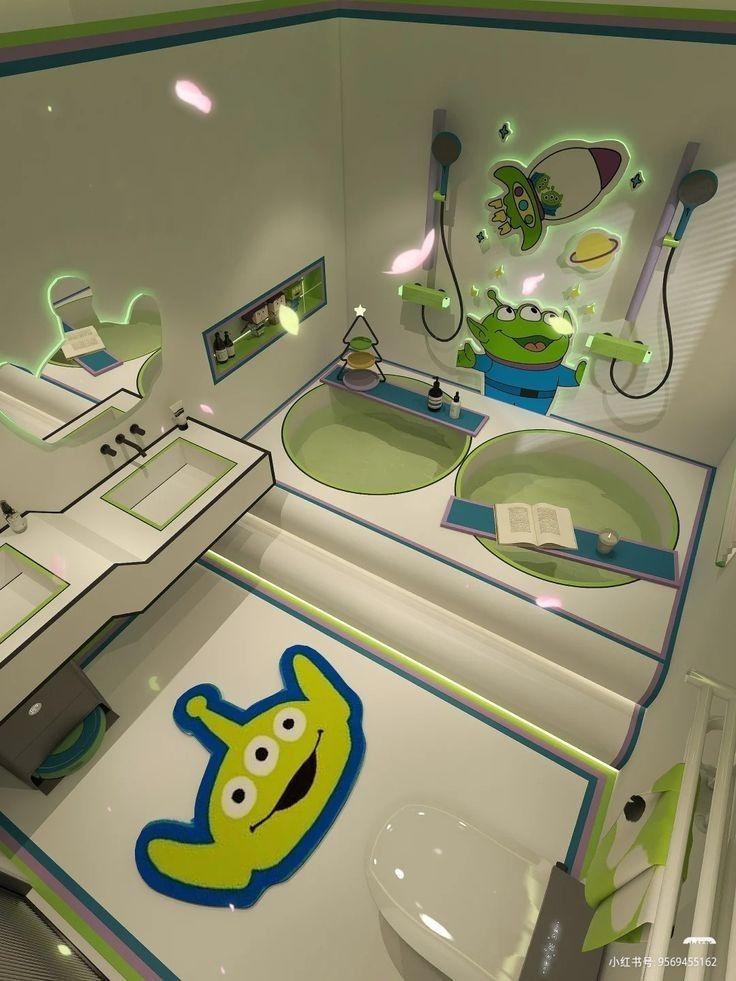
Smart features aren’t just for adult spaces anymore—modern kids’ bathrooms are embracing technology to streamline routines and engage young users. Digital timers on toothbrush holders help ensure children brush for the dentist-recommended two minutes, often paired with music or lights that make the process fun.
Interactive mirrors with embedded LED lights or voice activation can respond to commands, guiding kids through step-by-step hygiene instructions. Some families install waterproof Bluetooth speakers or story-playing devices near the bath to turn cleanup into entertainment time.
Temperature-regulating faucets, motion-sensor soap dispensers, and voice-assisted reminders support hands-free hygiene, ideal for germ-prone environments. For more advanced setups, smart nightlights or connected ceiling speakers help set routines with auditory cues and calming sounds.
Safety remains a priority—so all tech should be moisture-sealed, parent-controlled, and age-appropriate. Many of these gadgets are battery-operated and don’t require permanent wiring, making them renter- and budget-friendly.
By integrating child-focused smart tech, the bathroom becomes a space that educates, entertains, and empowers. Thoughtfully chosen tools support independence, reduce parental oversight, and make self-care habits stick. In an age where screens dominate, interactive tech in the bathroom provides structure without overwhelm—blending convenience with childhood curiosity.
